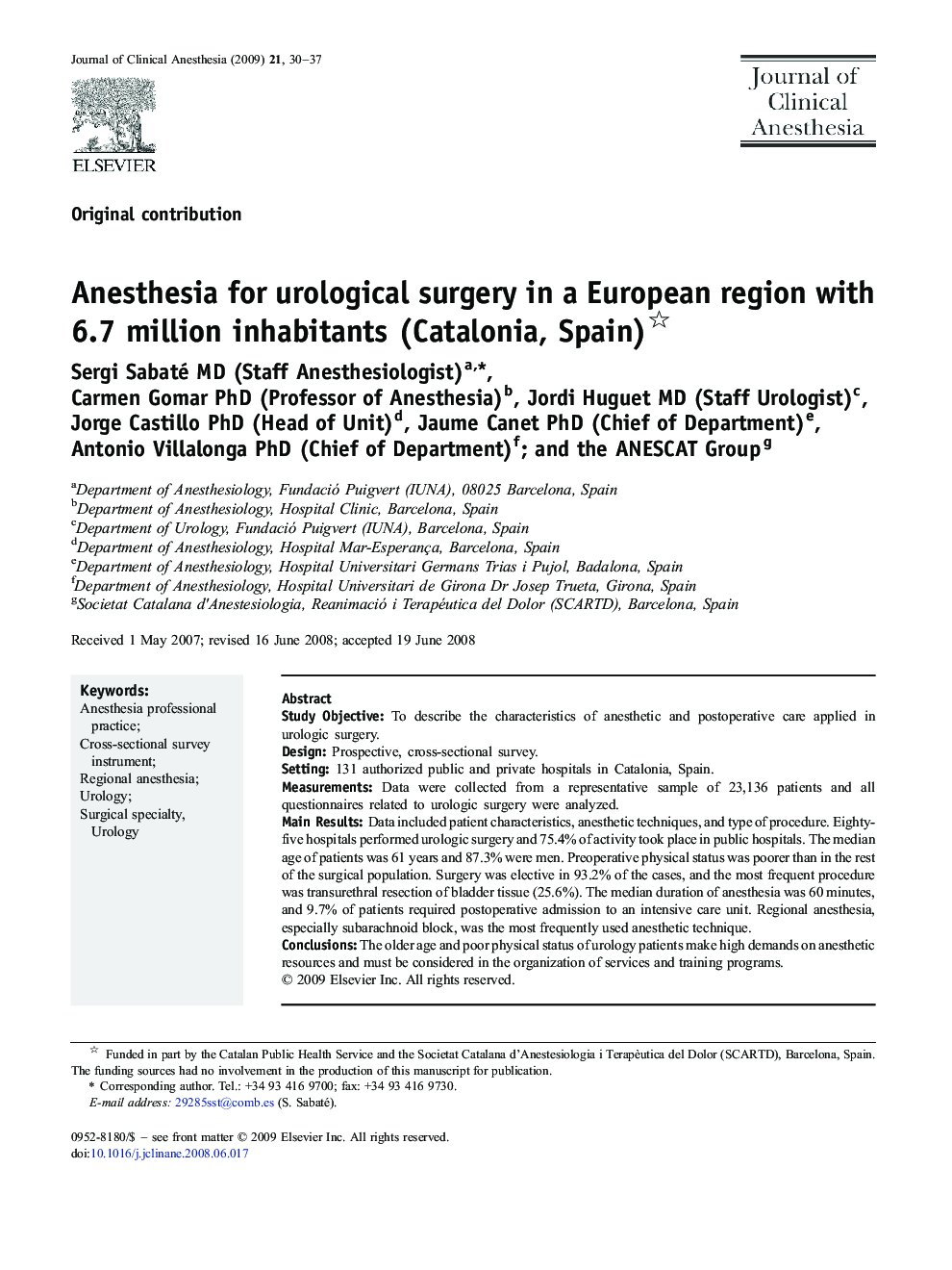| Article ID | Journal | Published Year | Pages | File Type |
|---|---|---|---|---|
| 2763442 | Journal of Clinical Anesthesia | 2009 | 8 Pages |
Study ObjectiveTo describe the characteristics of anesthetic and postoperative care applied in urologic surgery.DesignProspective, cross-sectional survey.Setting131 authorized public and private hospitals in Catalonia, Spain.MeasurementsData were collected from a representative sample of 23,136 patients and all questionnaires related to urologic surgery were analyzed.Main ResultsData included patient characteristics, anesthetic techniques, and type of procedure. Eighty-five hospitals performed urologic surgery and 75.4% of activity took place in public hospitals. The median age of patients was 61 years and 87.3% were men. Preoperative physical status was poorer than in the rest of the surgical population. Surgery was elective in 93.2% of the cases, and the most frequent procedure was transurethral resection of bladder tissue (25.6%). The median duration of anesthesia was 60 minutes, and 9.7% of patients required postoperative admission to an intensive care unit. Regional anesthesia, especially subarachnoid block, was the most frequently used anesthetic technique.ConclusionsThe older age and poor physical status of urology patients make high demands on anesthetic resources and must be considered in the organization of services and training programs.
